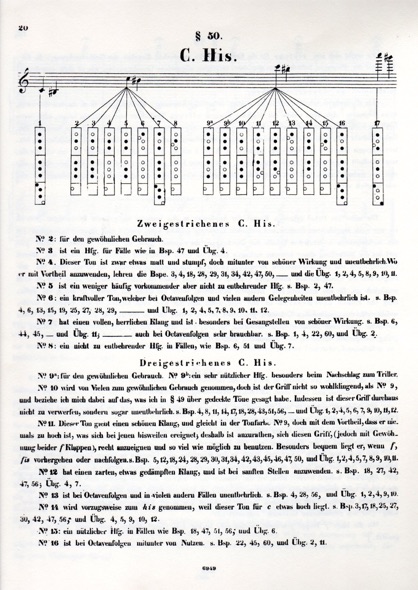

An
essential
aspect of the
historically informed
performance is the search
for the best suited instruments for
the respective music, and we very rarely
have first-hand knowledge for which specific
instrument a composition was originally written.
So it is a stroke of luck, that Anton Bernhard Fürstenau, in his 1844 published book “Die Kunst des Flötenspiels” (The Art of Flute-playing), not only describes how a flute should be constructed, but also even states who, in his opinion, knows how to build such an instrument the best: “From all the flute bores known to me, I may say the best are those by the instrument maker W.Liebel from Dresden, and I rightly recommend them, for they bring together everything that is good. They speak easily in all the registers, have soft, beautiful high notes, an agreeable, euphonic middle octave, a strong and sonorous low range, a magnificent evenness (…) and the purest, best possible intonation in all octaves and tonalities.”
As a matter of fact, Fürstenau´s fingering table, which gives up to nine different fingerings for some notes, works without problems on a Liebel flute. This fingering table allows the player to draw every possible nuance of sound from a conical transverse flute – a variety that, in Fürstenau´s view, the Boehm flute lacked…
The B-foot, used with most of the Liebel flutes, contributes to this sound variety. It does not principally serve to extend the range to the lower B, but supports primarily the high register of the flute and consequently gives the instrument a superbly, focused sound, that is never piercing or shrill.
As enchanting as the sound may be from the surviving original instruments made by Wilhelm Liebel, at times the intonation is problematic. The problems result mainly from the inevitable variation of the bore in woodwind instruments after long continued use. The intonation of a copy can be improved considerably through careful bore corrections. However it will never become “perfect”, because every alteration in the conception of a flute changes its sound and naturally it would be undesirable to lose the superb acoustic characteristics of the original instrument.
Confronted with this dilemma I normally decide in favour of the acoustic qualities of the original, because a coherent instrument with a stable and inspiring sound permits intonation adjustments by the player, rather than an instrument with a supposedly tempered intonation but a boring and unstable tone.
My model is based on six Liebel originals from different private collections, that in tone, conception, embouchure and bore show clear similarities and were for the most part apparently built with the same reamers.
from:
„Die Kunst des Flötenspiels“ Op.138
Anton Bernhard Fürstenau (1844)
Wilhelm Liebel, Dresden, ca.1830
boxwood or grenadilla with silver rings
tuning slide and screw cork
9 silver keys
a=430 - 440 Hz

Photo: Ulrich Ehret
Fridtjof Aurin Traversos Düsseldorf

